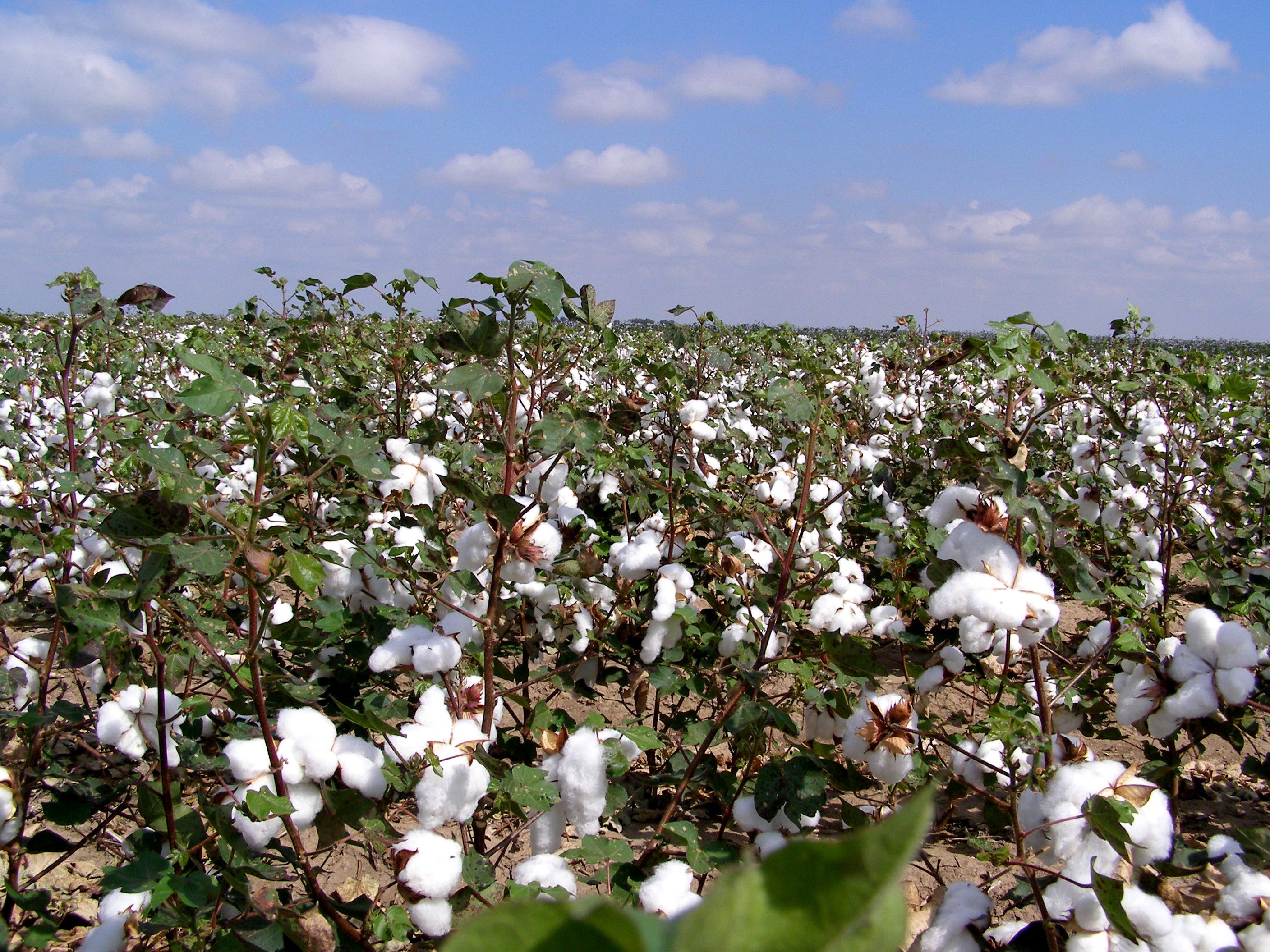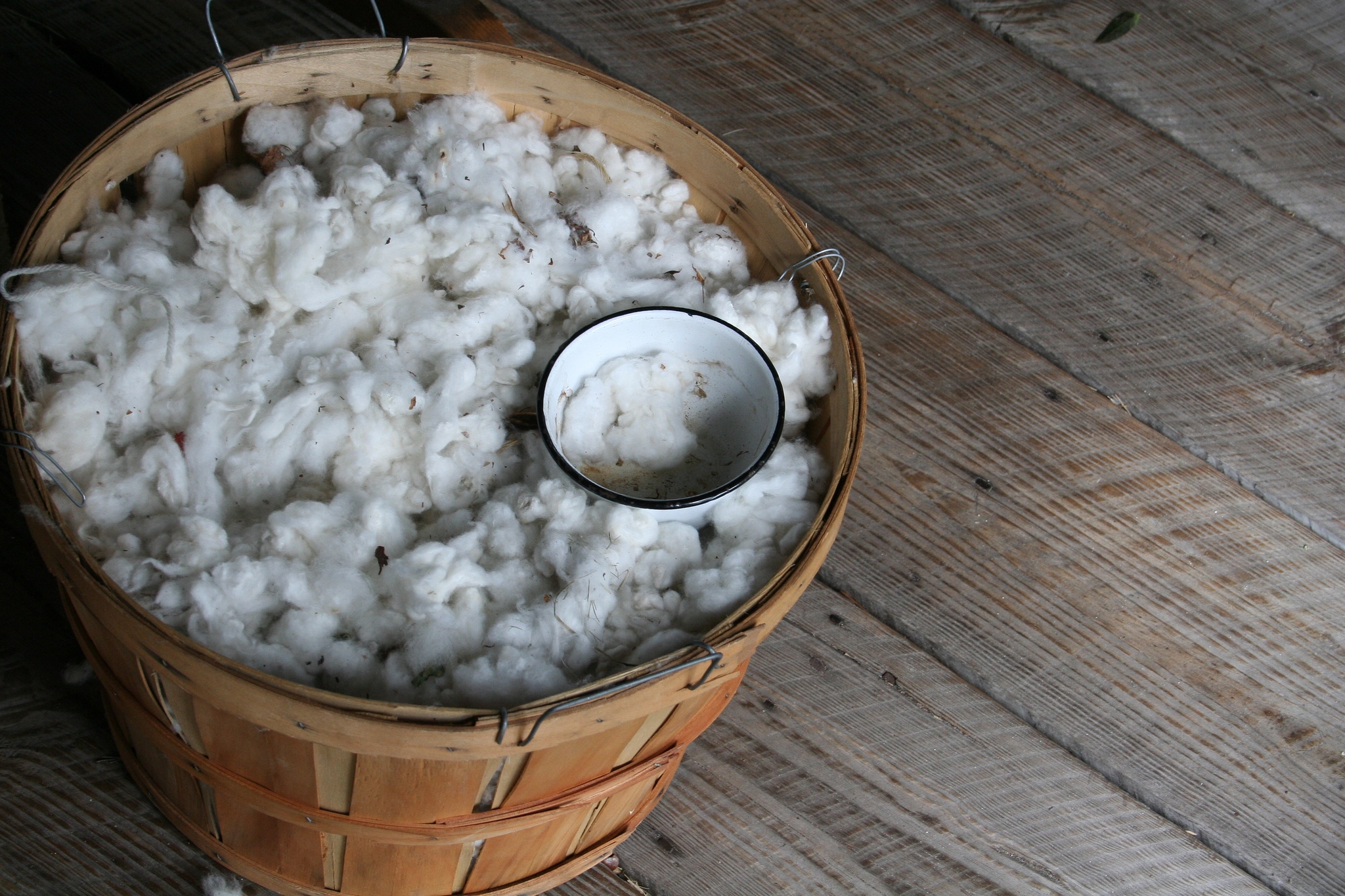Cotton is one of the oldest textile materials around, yet there is so much synthetic materials being used in clothing today. On July 23rd, I attended the Kingpins denim show in New York, and got to check out a seminar about cotton farming challenges and how brands and consumers can work with the cotton industry to combat those challenges. Below are some of my notes from the seminar, plus a few links for more information on sustainable and organic cotton products.
Challenges that cotton farmers face are: - Weather related (drought, flood, hail), where 20% of crops can be destroyed - Price volatility - for example in 2011 prices went from 70-80 cents per pound to over $2 per pound due to futures investments. Farmers had price protection and would hold on to cotton, and as a result, more brands and vendors switched to synthetic fibers in production and stopped buying as much cotton. Then, prices crashed and the cotton market is still down. - Urbanization - losing farm land to new development, increasing land pricing and property taxes - Access to water - improving efficiency (cotton is not a "thirsty plant") - exploring better ways to get water to the root of the plant, as over watering or watering from above can make each plant's cotton yield less. Best results come from underground irrigation methods.
Challenges for US Farmers US cotton is the number one export and makes up 4.8% of the GDP, with $37 billion in annual revenue. There are about 18,600 farmers in the US, and the average farm size is 1300 acres. Most are family owned. 
Cotton Farming - World Wide Cotton farms world wide are typically smaller and owned by individual families, and are about the size of a soccer field. Families have challenges accessing financing for seeds, pesticides and fertilizers, which will help make sure they get the most crop yield for their investment. They face obstacles such as high interest rate loans, or even purchasing of bad seeds or fertilizers that don't work. They are forced sometimes to buy on the black market, and the plants don't grow well, isn't immune to pests, and further makes access harder when they aren't able to make money from their crops. Cotton thrives in arid climates, but still needs water to grow. Many small farmers don't have efficient irrigation systems, and end up wasting water. Price of cotton purchased from farmers is relatively stable in other countries, but the costs of seeds, fertilizers, etc. are higher than in the US. In India, 20% of all electricity used is for irrigation pumps.
What does the future look like? - farming legacies discontinue because no one's children wants to be farmers - fewer farmers due to mass migration to bigger cities - those that do stay in farming combat issue of land availability
What can we do? We need to take care of farmer at the beginning of the supply chain, so that the spinners, converters, etc. don't also fall apart.
Did you know? Cotton is also a food crop - cotton seed oil, and is also used to feed livestock. For each plant, 60% of the weight is food, 40% is textile fiber. A cotton farmer is a better food farmer, because of the techniques used to have successful cotton crops can be applied to other plants. Farmers learn crop rotation, and change pesticide usage, which in turn enriches soil, and crops can serve as a multiplier in the community. 
Cotton - GMO vs. Organic 80% of the world's cotton is GMO (90% in the US). The benefits are that the cotton is resistant to certain insects, herbicides. However it doesn't make the actual yield any higher than non-GMO cotton. The organic cotton market is very niche today, and unfortunately it's not economically viable to most farmers. $3 billion is spent on pesticides for cotton crops every year, and farmers STILL lose about 30% of their crop to pests/insects. Organic cotton crops yield 20-30% less than GMO cotton crops, so it actually requires more land, and more water. Is it really more sustainable? People are on both sides of organic / eco spectrum, are they more or less likely to purchase products?
What can brands/designers do to influence change, and how can they improve the issue? Most brands don't buy fibers directly, they buy material after it is processed. Therefore, sourcing directly from the farmer would be difficult. However, brands don't need to start a new sourcing effort, but they can go through an established sustainable and responsible sourcing organization. Uniqlo is an example of a company that works directly with cotton mills and farms in Japan. Brands can promote cotton in a positive way - don't overemphasize the challenges of cotton, so that the public doesn't turn off from the fiber. Brands can be more specific on where the cotton comes from (country, type of farm, etc.).
The big question, do we care where our product comes from? Can a program be influential if consumers don't care? Information and education are key.
Additional Resources: BCI: Better Cotton Initiative Cotton LEADS e3cotton.com Sustainable Cotton The Textile Exchange